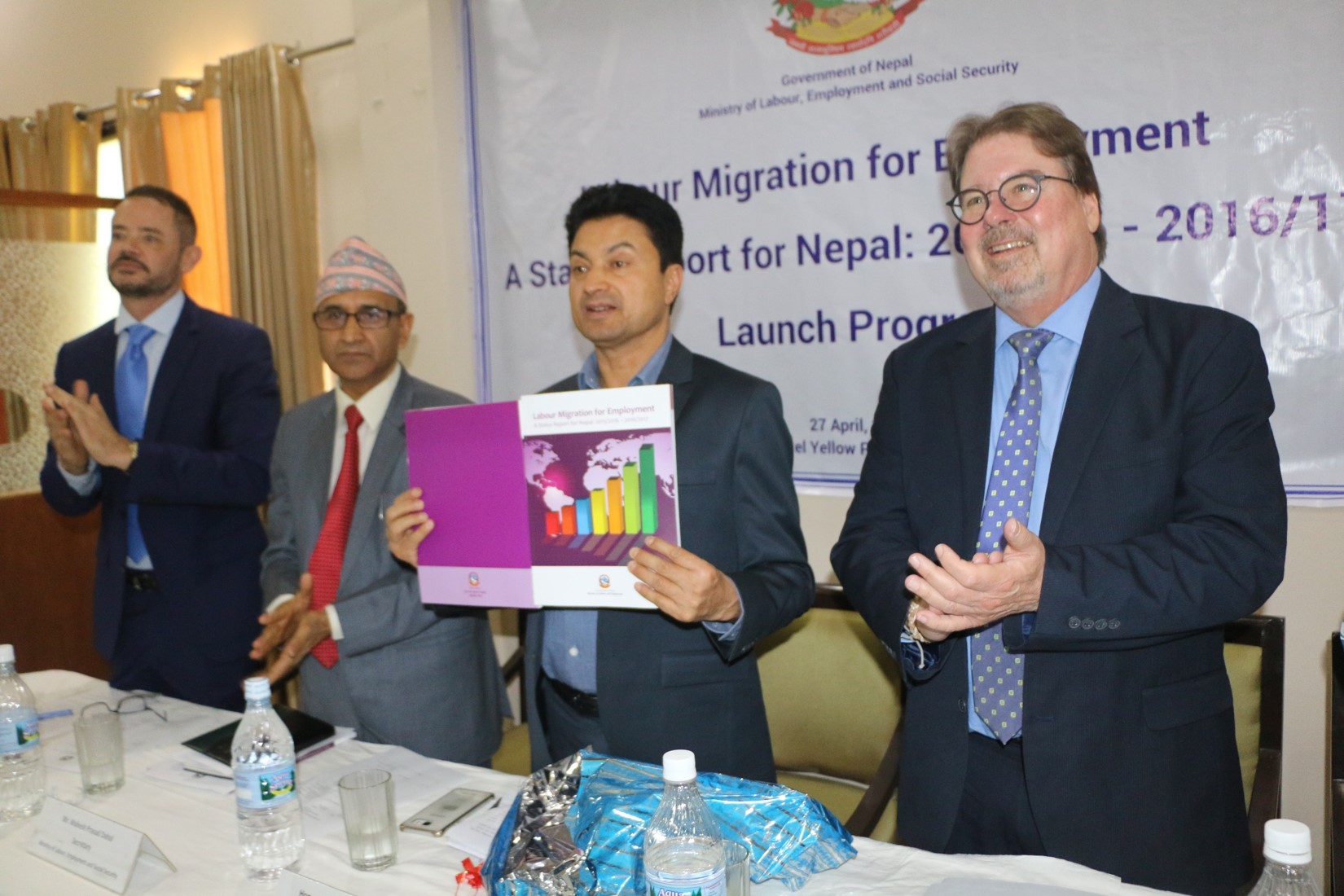Kathmandu, April 27, 2018: Remittance remained one of the highest contributors to the national GDP of Nepal with nearly 669 bilion (USD 6.56 billion) coming in from youths laboring abroad, according to a report titled “Labour Migration for Employment-A Status Report for Nepal: 2015/16-2016/17” released in Kathmandu on 27th April,2018.
The report was launched by Ministry of Labour, Employment and Social Security, with support from IOM, the UN Migration Agency, the International Labour Organization (ILO) and The Asia Foundation.
The report highlights the lack of reliable data on labour migration to India – a major destination; limited coordination and collaboration between different government agencies addressing issues affecting migrant workers; centralized government and private recruitment agencies raising the cost of migration; a lack of skills recognition and skills matching mechanisms; and a lack of procedural guidelines on supporting the reintegration of returnees.
“Sound data and accurate analysis are essential to formulate evidence-based policies and implement them effectively in Nepal – a country where over half of all households have at least one family member currently living abroad or living at home as a returnee” said IOM Nepal Chief of Mission Paul Norton. “This report is an important step for the government agencies and other stakeholders to work towards effective regulatory mechanisms to protect and promote migrants’ rights and wellbeing,” he added.
The report, which calls for continuous monitoring and regulation of recruitment agencies, as well as better pre-departure orientation and health assessments, flags the need for urgent measures to improve access to justice for migrant workers and their families, and the protection of migrant workers’ rights in destination countries. It notes that existing laws and better foreign employment policies can make the labour migration process simpler, fairer, more transparent and more cost-effective. It also noted that during the last three years, Nepali labour migrants have registered nearly 7,500 complaints, citing numerous instances of fraud and malpractice during their recruitment and employment abroad.
Speaking at the report launch event Minister for Labour, Employment and Social Security Gokarna Bista said “The Ministry will be working to make the foreign employment sector more transparent and result oriented so the migrant workers feel the positive change in the sector immediately.”
Labour Ministry Secretary Mahesh Dahal said, “The Ministry has been working towards decentralized service delivery, demand letter certification through the Nepalese Missions in destination countries and making the minimum skill training mandatory among others. He further said, “Nepal is the Chair of the Colombo Process, Member of Abu Dhabi Dialogue, and Deputy Member of ILO’s governing body. Those forums are important for the Member States to put forward their priority issues more collectively and strongly and Nepal plays leadership role in such forums. We believe the Global Compact on Migration plays significant role in ensuring Nepali migrants’ rights and Nepal is actively engaged on this process.”
“Unpacking the skills and occupation trends of outgoing migrant workers is important piece to inform and evaluate skills development policies and programmes while simultaneously developing a better understanding of how labour migration affects our own labour market,” Director of the ILO Country Office for Nepal Richard Howard commented. He added “Data and analysis on skills and occupation also helps to understand the skills and experiences brought back by returnee migrant workers thus informing strategies to be used to address economic and labour market reintegration of returnee migrant workers.”
The report includes data on Nepali migrant flows to specific destination countries; the nature of their
jobs; skill levels; the average cost of migration to each country; average monthly wages; average
remittances received at the household and national level and other official government data from
various sources. It also discusses the socio-demographic implications of the outflows based on a range
of factors, including age, gender, education, skills, family and economic status, before and after
migration.







